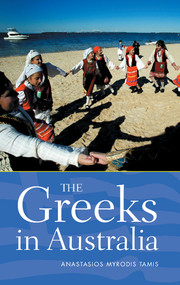2 - The Greeks Discover Australia
Published online by Cambridge University Press: 22 September 2009
Summary
Preparing for the unknown
Although Australia remained largely unknown to Greeks, from 1829 to 1974 approximately 300 000 immigrated and settled in. The early period of settlement (1829–80) was highlighted by the arrival of displaced Greek patriots convicted for piracy by the British naval court in Malta (Gilchrist, 1995; Tamis, 1997a, 1997b), curious seafarers, fortune seekers and adventurers tempted by the gold rush. During these early days the sporadic migration comprised predominately 450 Greek male sailors serving on British vessels, fugitives, fortune hunters, unsuccessful islander traders and unskilled or unemployed persons from the Greek islands interested in the possibilities in a new land. From Sydney and Perth, where they landed initially, many moved on to other areas; the fortune seekers headed to the goldfields, the travellers roamed across the country, and some migrants settled in rural New South Wales (NSW) and Victoria. Greek gold-miners, from the Ionian Islands, a British protectorate (1815–64), began to arrive in large numbers after 1850 to amass wealth and return to Greece, with the intention of investing in the flourishing Greek shipping industry of the time. Most of them settled in NSW and Victoria, particularly in Ballarat and Bendigo. Some of them even participated in the armed Eureka Stockade rebellion in 1854, in which miners protested against the unbearable working conditions and capital taxes imposed on them by the British colonial rule. Among the Eureka stockade participants was the Ithacan Andreas Lekatsas who had arrived in Australia in 1851.
- Type
- Chapter
- Information
- The Greeks in Australia , pp. 31 - 58Publisher: Cambridge University PressPrint publication year: 2005
- 1
- Cited by



